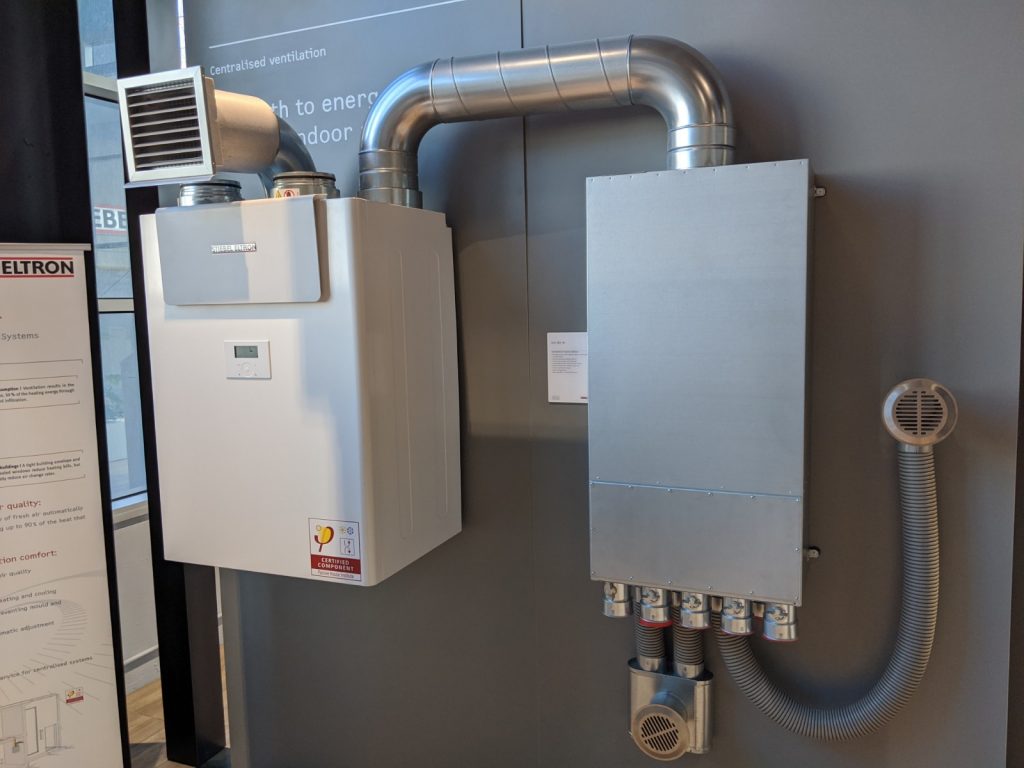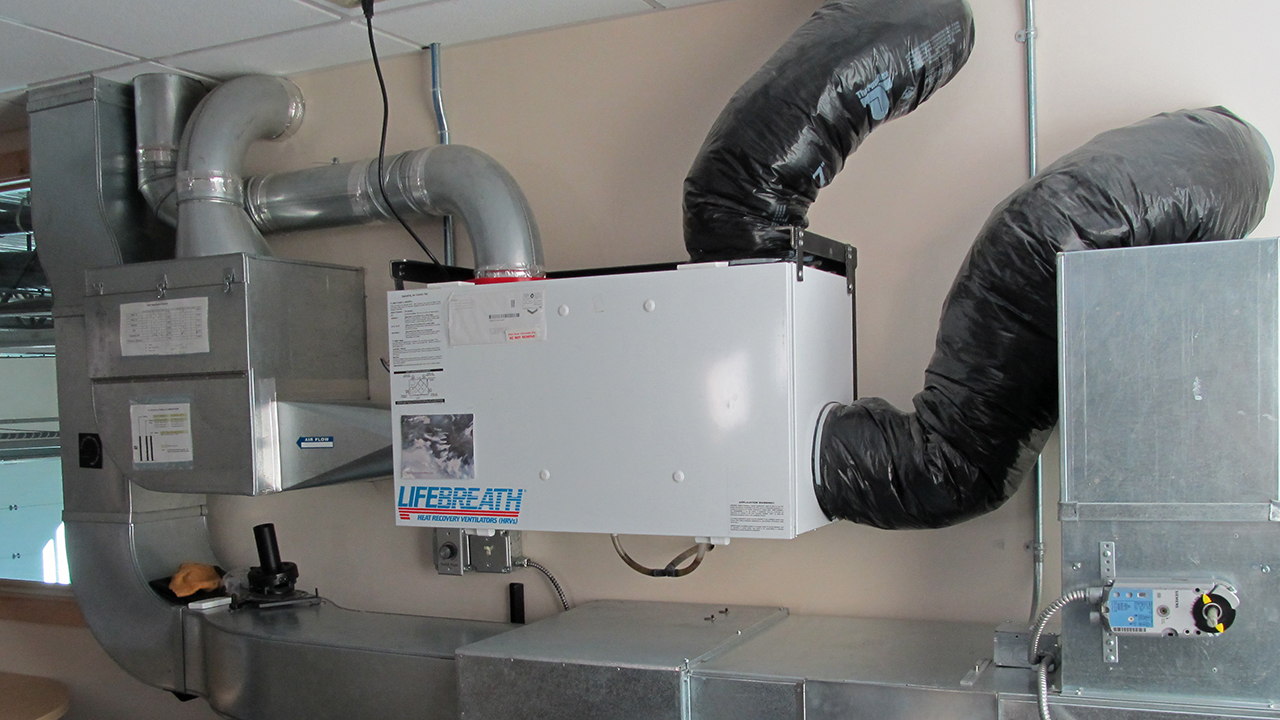Money-Saving Potential of HRV for Homeowners
Exactly How Heat Recovery Ventilation Improves Indoor Air Top Quality and Reduces Energy Prices
Heat Recovery Ventilation (HRV) systems play a crucial function in boosting interior air quality while all at once lowering power expenses. By successfully exchanging stagnant interior air with fresh outside air, HRVs help maintain ideal moisture and reduce contaminants. In addition, their capability to recover warm from outgoing air minimizes the stress on heating and cooling systems. As power expenses remain to increase, comprehending the full potential of HRV systems ends up being significantly essential for property owners and companies alike.
Recognizing Heat Recovery Ventilation Solutions

Heat recovery ventilation (HRV) systems play an important duty in improving indoor air high quality, particularly in modern-day, energy-efficient buildings. These systems are made to transfer heat from the outbound stagnant air to the incoming fresh air, therefore minimizing energy loss while preserving suitable temperature level levels indoors. HRVs contain a warm exchanger, followers, and ductwork, promoting the continual circulation of air. By removing indoor contaminants and introducing fresh air, HRVs aid to balance moisture levels, prevent mold development, and minimize allergens. The efficiency of HRV systems hinges on their capacity to recover approximately 80% of the heat from the worn down air, advertising energy conservation while ensuring a healthy and balanced interior atmosphere. Their integration is important in attaining sustainable living methods.
The Relevance of Indoor Air Top Quality
Indoor air quality (IAQ) is a critical factor affecting the wellness and health of residents in any type of setting. Poor IAQ can bring about numerous wellness problems, consisting of respiratory issues, allergic reactions, and exhaustion. In addition, it can exacerbate status quo such as bronchial asthma. Variables adding to low IAQ consist of contaminants from indoor resources like cleansing representatives, mold, and poor ventilation. Maintaining excellent IAQ is essential for advertising a risk-free and comfy living or functioning space. Efficient approaches to improve IAQ involve regular surveillance of air high quality, appropriate ventilation systems, and lessening the use of harmful compounds indoors. By focusing on IAQ, people can ensure a much healthier environment that fosters performance and overall quality of life.
Power Efficiency Advantages of HRV Solutions
Several homeowners and building managers are progressively acknowledging the power performance advantages of heat recuperation ventilation (HRV) systems. By transferring warm from tired interior air to inbound fresh air, HRV systems markedly decrease the energy needed for heating & cooling. This process lessens reliance on standard a/c systems, resulting in lower energy bills. Additionally, HRVs help maintain a well balanced interior environment, stopping extreme heating or cooling needs. The ability to recover approximately 90% of the warmth from outward bound air additionally sustains sustainability efforts by lowering total power intake. HRV systems add not just to cost savings but also to a reduced carbon impact, aligning with the expanding focus on energy-efficient structure methods.
Installment and Maintenance Considerations
The reliable application of warmth recovery ventilation (HRV) systems calls for careful factor to consider of installment and maintenance elements to assure peak efficiency. Appropriate positioning of the HRV unit is necessary, as it must be mounted in a place that makes best use of airflow while decreasing sound disruption. Additionally, ductwork has to be suitably sized and shielded to avoid energy loss. Regular upkeep, consisting of filter substitute and system cleaning, is essential to safeguard optimum functionality and interior air quality. Owners must establish a routine upkeep schedule to recognize and address prospective concerns before they intensify. Cooperation with skilled specialists throughout both installation and maintenance stages can boost the longevity and effectiveness of HRV systems, eventually resulting in far better indoor environments and minimized energy prices.
Real-World Applications and Success Stories
Checking out real-world applications of warmth healing air flow (HRV) systems reveals their substantial impact on interior air quality and power efficiency throughout various setups. In residential structures, homeowners have actually reported improved air high quality, resulting in fewer allergic reactions and respiratory concerns. Schools implementing HRV systems have actually kept in mind enhanced trainee concentration and decreased absence as a result of far better air flow. Industrial buildings, such as offices and retail spaces, have actually experienced lower energy costs and increased employee productivity. As an example, a company office in a pleasant visit this page environment attained a 30% decrease in power bills after mounting an HRV system. These success stories show that HRV innovation not just adds to healthier atmospheres however likewise supplies substantial click here for info economic advantages, making it a beneficial investment for different fields.
Regularly Asked Questions
Can HRV Equipments Reduce Irritants in Indoor Air?
The efficiency of HRV systems in decreasing interior allergens primarily hinges on their ability to filter and exchange air. HRV Heat Recovery Ventilation. By continuously changing stale air, these systems can significantly decrease allergen degrees throughout indoor environments

How Does Moisture Affect HRV System Performance?
Humidity significantly influences HRV system performance; high levels can bring about condensation, lowering effectiveness, while reduced moisture might boost air exchange. Stabilizing moisture is essential for ideal operation and preserving indoor air high quality.
Are HRV Systems Noisy Throughout Operation?
HRV systems can generate varying sound levels during operation, depending upon their style and setup. Some systems operate silently, while others might generate noticeable sound, specifically at greater air flow setups or when improperly preserved.
What Is the Average Life Expectancy of an HRV System?

Can HRV Equipments Be Made Use Of in All Environments?
HRV systems can be made use of in various environments, yet their performance might differ - HRV Heat Recovery Ventilation. In severe temperature levels, modifications or supplemental systems could be required to assure perfect performance and comfort while preserving indoor air top quality